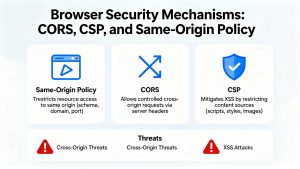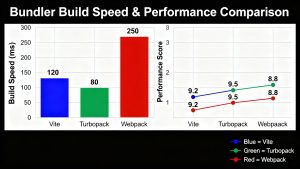Docker has transformed significantly since its early days in 2015. Back then, running a container was often a simple experiment-users ran commands like docker run -it ubuntu bash, installed tools inside containers, and treated containers almost like lightweight virtual machines. Many neglected important practices such as using .dockerignore files, running containers as root, or defining healthchecks. However, Docker today is a sophisticated, production-grade platform that requires modern workflows and best practices to unlock its full potential.
This article explores outdated habits that should be abandoned and highlights the modern, efficient, and secure ways to use Docker in 2025.
Outdated Docker Habits to Leave Behind
1. Avoid Using the version: Field in Docker Compose Files
The version: field in docker-compose.yml is now largely obsolete. Modern Docker Compose files start directly with the services: block, reducing clutter and simplifying configuration.
2. Always Define Healthchecks
Without healthchecks, Docker cannot detect if a containerized service is unhealthy, preventing automatic restarts or recovery. Adding a healthcheck like the following enables Docker Compose to manage container health effectively:
texthealthcheck:
test: ["CMD", "curl", "-f", "http://localhost:3000"]
interval: 30s
timeout: 5s
retries: 3
3. Stop Running Containers as Root
Running containers with root privileges exposes serious security risks. Instead, create and switch to a non-root user inside your Dockerfile:
textRUN useradd -m appuser
USER appuser
Ensure volume mounts have appropriate ownership to avoid permission issues.
4. Use a .dockerignore File
Neglecting .dockerignore leads to bloated images containing unnecessary files like .git, node_modules, or sensitive .env files. A .dockerignore file reduces build context size, speeds up builds, and protects secrets.
5. Adopt Multi-Stage Builds to Avoid Bloated Images
Including build tools and dependencies in the final image creates unnecessarily large containers. Multi-stage builds separate build and runtime environments, producing lean images:
textFROM node:20 AS build
WORKDIR /app
COPY . .
RUN npm install && npm run build
FROM node:20-slim
WORKDIR /app
COPY --from=build /app/dist ./dist
CMD ["node", "dist/index.js"]
6. Utilize BuildKit and Cache for Faster Builds
Manually running docker build . without cache wastes time. Enable BuildKit (DOCKER_BUILDKIT=1) and use cache mounts (--mount=type=cache) to speed up builds and improve efficiency.
What Modern Docker Usage Looks Like in 2025
Clean and Efficient Compose Files
Eliminate legacy fields and add healthchecks and user directives for production readiness:
textservices:
app:
build: .
healthcheck:
test: ["CMD", "curl", "-f", "http://localhost:3000"]
interval: 30s
timeout: 5s
retries: 3
user: "1000:1000"
Development Enhancements
Use docker compose watch for live reloads, bind-mounted volumes for fast iteration, and caching strategies to minimize rebuild times.
Production Readiness
Docker is fully capable of production deployment when used correctly. Implement healthchecks, multi-stage builds, non-root users, and security best practices to ensure stability and security.
Security Best Practices for Docker Containers in 2025
- Run Containers with Least Privilege: Avoid root users inside containers to reduce privilege escalation risks.
- Use Read-Only Filesystems: Run containers with
--read-onlyflag and mount volumes as read-only where possible. - Regularly Update Images and Hosts: Keep base images and host kernels patched to mitigate vulnerabilities.
- Scan Images for Vulnerabilities: Use tools like Trivy or Docker Scout to scan images routinely.
- Manage Secrets Securely: Avoid embedding secrets in images; use Docker Secrets or external vaults.
- Limit Resource Usage: Define CPU and memory limits to prevent resource exhaustion attacks.
- Enable Docker Content Trust: Use signed images to ensure integrity and authenticity.
- Monitor and Log Container Activity: Deploy monitoring tools to detect suspicious behavior and audit access.
- Restrict Network Access: Use firewalls and network policies to isolate containers and secure traffic.
Best Practices for Efficient Docker Container Management
- Automate Builds with Dockerfiles: Ensure reproducibility and consistency.
- Keep Images Small: Use minimal base images and multi-stage builds.
- Persist Data Properly: Use volumes or bind mounts for data that must survive container restarts.
- Implement Logging and Monitoring: Integrate with tools like ELK Stack or Prometheus for insights.
- Use Orchestration Tools: Employ Kubernetes or Docker Swarm for managing multi-container deployments.
- Design Single-Purpose Containers: Follow microservices principles for easier scaling and maintenance.
- Follow Immutable Infrastructure: Treat images as immutable; rebuild rather than modify.
Conclusion: Embrace Modern Docker Practices
Docker is no longer a simple developer toy but a mature, powerful platform for both development and production environments. To fully leverage Docker’s capabilities in 2025, users must abandon outdated habits such as running containers as root, ignoring healthchecks, and shipping bloated images. Instead, adopting multi-stage builds, BuildKit caching, secure user practices, and robust health monitoring will ensure efficient, secure, and scalable containerized applications.
By modernizing Docker workflows and embracing best practices, organizations can unlock the true power of containerization and maintain a competitive edge in software development and deployment.
This comprehensive approach to Docker usage aligns with the latest industry standards and security recommendations, ensuring that containerized applications run efficiently and securely in today’s complex environments.
Read more such articles from our Newsletter here.



